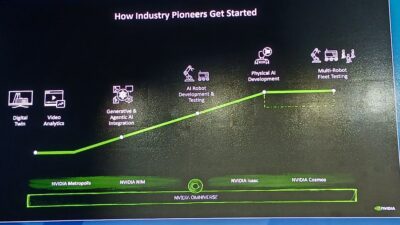Control Engineering International: Robotics and other automation are seen as competitive opportunities as labor costs increase in China, according to Control Engineering China.

One of the reasons China has become a manufacturing power is that China’s manufacturing enterprises can benefit from abundant labor resources and low labor costs. At present, with the approaching end of the “demographic dividend” in China, this situation appears ready to change. Labor supply and demand are changing manufacturing enterprises in China.
In the past two years, a tighter labor market has markedly increased labor wages in China, especially in some manufacturing-intensive areas, such as the Pearl River Delta and the Yangtze River Delta. Despite raising pay at an annual average rate of 10%, some factories still find recruitment difficult.
Automation fills the gap
Many manufacturing facilities are exploring new measures to offset recruitment challenges. These include changing modes of employment (such outsourcing factory positions or functions) and using new equipment or technologies for manufacturing. These measures reduce dependence on permanent employees.
Some decision makers also have been increasing the amount of automation used in their factories. For example, a textile processing factory in Suzhou, Kiangsu province, set up an automated stereoscopic warehouse system, using an information system to control inventory, taking the place of manual work in stowage and cargo management.
The factory director said he followed the example of another factory in the same industry. The purchase of the system has significantly improved efficiency. In the warehouse, the system helped reduce labor costs and the number of errors in quantity of goods transferred, previously checked by warehouse workers and transport drivers.
Robots improve safety, quality
In some other factories, industrial robots have taken the place of humans to deal with some repetitive and high-strength work. Robotic applications, previously used primarily for automobile manufacturing in China, are expanding into other industries. An obvious example is Foxconn, one of the largest electronic manufacturing groups. Foxconn said it will add a large number of industrial robots into its production lines in China.
Generally speaking, challenges often create opportunities. Changes brought by labor supply and demand may be a new driving force to develop Chinese manufacturing industries, and we also will be happy to see Chinese workers getting more value from their hard work.
– Henry Qiao is an editor, Control Engineering China. Translation from a recent edition of CE China edited by Mark T. Hoske, content manager, CFE Media, Control Engineering, [email protected].
Consider this
Chinese manufacturers apply robotics and other automation to help with labor shortages; do hazardous, repetitive, dangerous work; and improve quality. Are you optimizing robotics and other automation?
ONLINE
www.cechina.cn
See other Control Engineering International articles.



